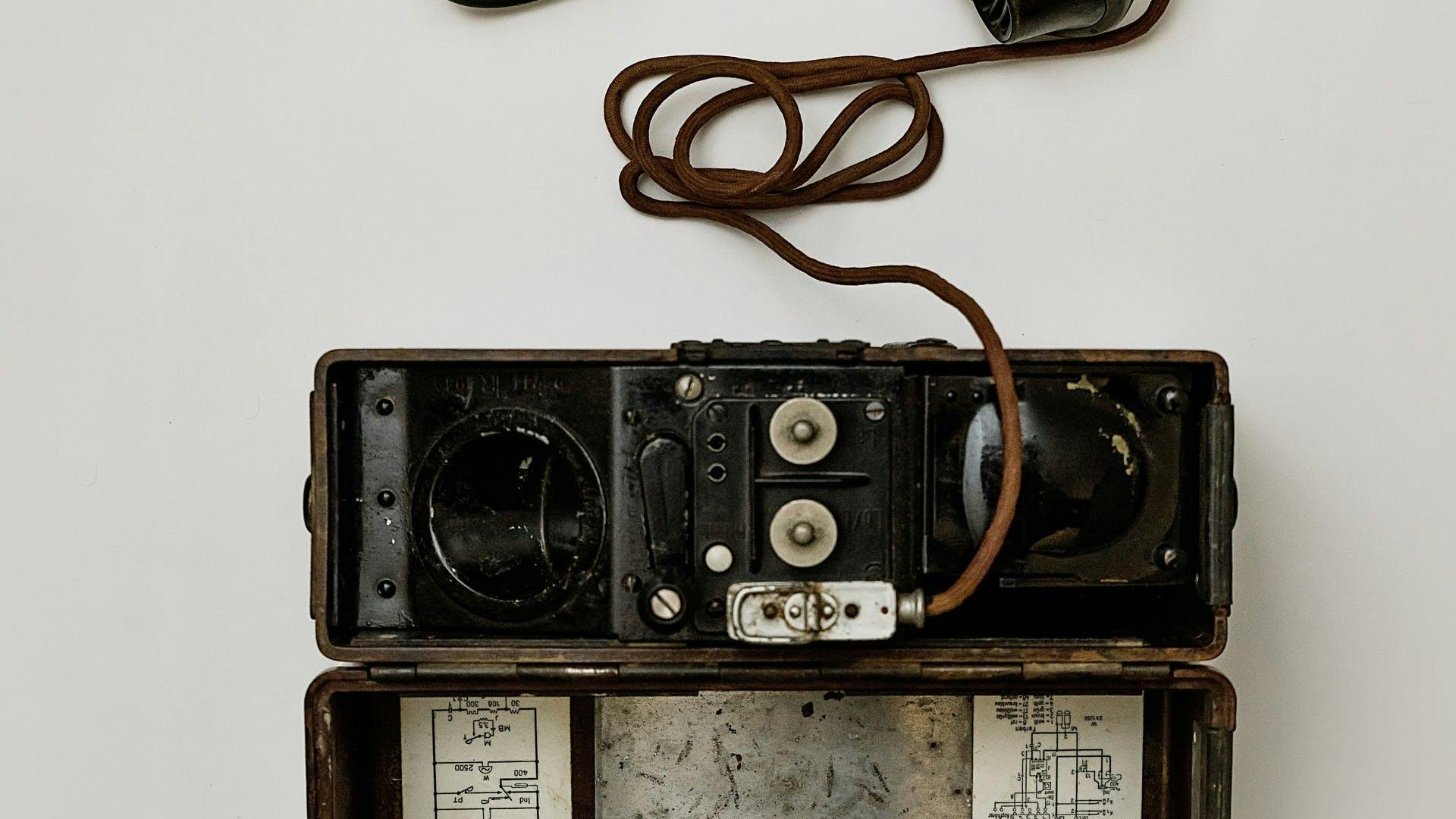The 40 greatest innovations of all time
hanges to society and technology have impacted how we create, develop, and invent new ways to face the world’s challenges. But true innovation lies not only in looking to the future, but understanding the past.
This article was written by the original owner of startupguide.com, Ryan Allis, and published on his website in 2012. Read more about why Ryan was happy to hand over his website domain to us here.
In order to develop world-changing innovations, it helps to be aware of that which has come before us. Here’s a brief tour through some of the most important innovations in human history.
1. Fire (400,000 BCE) – The controlled use of fire was pioneered in the early Stone Ages, with some of the earliest evidence dating back to 400,000 BCE.
2. Language (100,000 BCE) – True semantic, phonetic language was first being used around 100,000 BCE, making it a lot easier to pass on how-to knowledge and speed up the spread of innovation.
3. Trade and specialization (17,000 BCE) – The first known instance of humans trading with other humans comes from New Guinea around 17,000 BCE, where locals exchanged obsidian for other needed goods. Trading merchants were, of course, the original entrepreneurs.
Read also: The history of entrepreneurship
4. Farming (15,000 BCE) – Around 15,000 BCE, the first animal domestication began taking place, and around 10,000 BCE, the first domestication of plants. Instead of having to be a nomadic species, we could finally settle in one place.
5. The whip (4000 BCE) – Around 4,000 BCE, the ancient Egyptians were making wooden sailboats. The advent of the ship was a huge step forward for humanity because it enabled commerce between different parts of the world.
In order to develop world-changing innovations, it helps to be aware of that which has come before us.
6. The wheel (3400 BCE) – The next significant step in the history of innovation came with the creation of the wheel, sometime between 3300 and 3500 BCE.
7. Money (3000 BCE) – Around 3000 BCE, the Sumerians were one of the first societies (if not the first) to begin using money for the exchange of goods, replacing the barter system.
8. Iron (3000 BCE) – The whole science of metallurgy began around 4400 BCE when human civilizations began to merge copper and tin to form bronze. Around 3000 BCE we found an even stronger substance called iron, which gave rise to a new age of human history.
9. Written language (2900 BCE) – The invention of written language was extremely important because it made written records and numerical calculations possible. The first recorded written language was Sumerian cuneiform, which started around 2900 BCE.
10. The legal system (1780 BCE) – In 1780 BCE, Hammurabi, the sixth king of Babylon, was one of the first to write down a formalized code of laws. He created a structure that enabled his people to understand what the societal norms were.
11. The alphabet (1050 BCE) – The first “true alphabet” (containing vowels as well as consonants) was created by the Phoenicians around 1050 BCE. Many modern alphabets evolved from the Phoenician alphabet.
12. Steel (650 BCE) – The earliest known production of steel is a piece of ironware from Western Asia about 4,000 years old. The Spartans used steel extensively around 650 BCE, as did the Chinese from 400 BCE.
13. Water power (200 BCE) – The next great innovation was water power, first used in the Fertile Crescent area in the Middle East. This breakthrough enabled enormous transformations in our ability to harness power.
14. Paper (105) – Moving into the common era (CE) calendar, we saw the creation of paper, which was first used by the Chinese around the year 105. With paper, knowledge could spread much more easily.
15. Movable type (1040) – When Gutenberg invented his printing press in 1436, following the invention of type in imperial China in 1040, he was able to mass-produce books.
16. The microscope (1592) – Back in 1592, Dutch spectacle makers Zacharias and Hans, a father and son team, discovered that nearby objects appeared greatly enlarged when looking through a specially shaped lens, creating the first known microscope.
17. Electricity (1600) – Going forward to 1600, English scientist William Gilbert coined the term electricity, which originated from the Greek word for amber. Later, in 1752, Benjamin Franklin showed that lightning and the spark from amber were one and the same substance: electricity.
Read also: The 12 greatest innovators of all time
18. The telescope (1608) – In 1608, Hans Lippershey created a convex lens and concave eyepiece that enabled the creation of the telescope. The next year, Galileo Galilei built on these early designs to create a much more powerful telescope that enabled us to understand our place in the universe.
19. The engine (1712) – The steam engine was first invented by Thomas Newcomen in 1712, and was tremendously important in powering the machinery that drove the Industrial Revolution.
20. The light bulb (1800) – In 1800, Humphry Davy, an English scientist, created the first light bulb. It was improved in 1879 by Thomas Edison, who discovered that a certain type of carbon filament, when placed in a bulb without oxygen, could glow for 40 hours.
21. The telegraph (1809) – In 1809, the first crude telegraph was invented in Bavaria by Samuel Soemmering. Samuel Morse, creator of the Morse code, invented the telegraph communication system that ended up a commercial success.
22. The electromagnet (1825) – In 1825, the electric magnet was discovered by British inventor William Sturgeon. His first magnet was an iron horseshoe wrapped with copper wire with a current passed through it.
23. Petroleum (1859) – In 1859, petroleum was discovered. Petroleum was one of the most efficient substances in terms of the amount of energy that could be expended per ounce of liquid when burned. The discovery of petroleum led to the gas-powered car half a century later.
24. The telephone (1860) – In 1860, the telephone was invented by Johann Philipp Reis. He was the first to produce a functioning electromagnetic device that could transmit understandable sounds. Sixteen years later, Alexander Graham Bell received the first patent for commercially successful telephones.
25. The vacuum tube (1883) – In 1883, Thomas Edison discovered that an electrical current could actually travel through gas or a vacuum. Ten years later, Lee De Forest invented the Audion to control and amplify the current, an innovation that became critically important to telecommunication.
26. Semiconductors (1896) – In 1896, the first semiconductors were discovered. A semiconductor is simply material that has electrical conductivity due to flowing electrons. Today, silicon serves as the main component for most commercially produced semiconductors.
27. Penicillin (1896) – In 1896, the French medical student Ernest Duchesne discovered the antibiotic properties of penicillium. It took until 1928 for Scottish biologist Alexander Fleming to re-discover it. Penicillin enables doctors to fight bacterial infections, and cure syphilis, gangrene and tuberculosis.
28. The radio (1897) – In 1897, Nikolai Tesla applied for and received the first radio system patent after demonstrating it the year before at the World’s Fair. Radio took advantage of the amazing invisible parts of the electromagnetic spectrum to transmit information through waves.
29. The electron (1897) – That same year, 1897, Joseph John Thomson discovered the electron, which has revolutionized the world in the last 115 years.
30. Quantum physics (1900) – Quantum physics came in 1900 with Max Planck’s quantum hypothesis that any energy-radiating atomic system can be divided into individual energy elements. In 1905, Albert Einstein theorized and later proved that light is made up of individual quantum particles, later termed photons by Gilbert Lewis.
31. The airplane (1903) – In 1903, we saw the invention of the airplane by the Wright brothers, Orville and Wilbur, on the North Carolina coast with the first successful flight of a manned machine occurring on December 17th.
32. Television (1926) – John Logie Baird invented the first televised moving images in 1926. Ten years later, the British Broadcasting Corporation (BBC) broadcast the first public television show.
33. The transistor (1947) – 1947 saw the creation of the transistor. A transistor is a device that’s used to amplify and switch electronic signals, to exchange information over a distance.
34. DNA (1953) – In 1953, James Watson and Francis Crick discovered that the correct model for DNA structure was the double helix model, then famously walked into a local pub and exclaimed, “We have found the secret of life.”
35. The integrated circuit (1959) – It was Jack Kilby of Texas Instruments and Robert Noyce of Fairchild Semiconductor, along with their teams, who created the first integrated circuits in 1959. All computers eventually ended up using integrated circuits, which later developed into microprocessors.
36. The internet (1969) – In 1969, we saw the creation of the early Internet, called the ARPANET, which was built by the United States Department of Defense Advanced Research Projects Agency (then called ARPA, today called DARPA) to connect researchers. The World Wide Web became a communication tool that formed a constantly updated record of human knowledge and expression.
37. Microprocessors (1971) – In 1971, Ted Hoff of Intel created the microprocessor, which was an integrated circuit. In a tiny space, it had all the functions of the computer or a central processing unit (CPU) on it.
38. The mobile phone (1973) – In 1973, Motorola launched the first handheld mobile phone. The first prototype weighed 2.5 pounds, offered 30 minutes of talk time, and featured a battery that took ten hours to recharge.
39. The smartphone (2007) – On January 9th, 2007, the iPhone launched. It was the first widely available smartphone with multi-touch capabilities. The multi-touch smartphone paved the way for the tablet and the coming convergence of the laptop, tablet and smartphone as well as new hybrids such as cloud-connected glasses and smartwatches.
40. The quantum computer (2011) – In 2011, the first quantum computer was brought to market by D-wave. Quantum computers use superposition and entanglement to solve some computing problems thousands of times faster than traditional computers.
What will be next on this list of innovation list? Will you be part of a team that creates the most important innovations in human history? Startup Guide books can help!
Main photo: Unsplash/Alexander Andrews
*This article was originally published on October 17th, 2018 and updated on December 11th, 2018.

